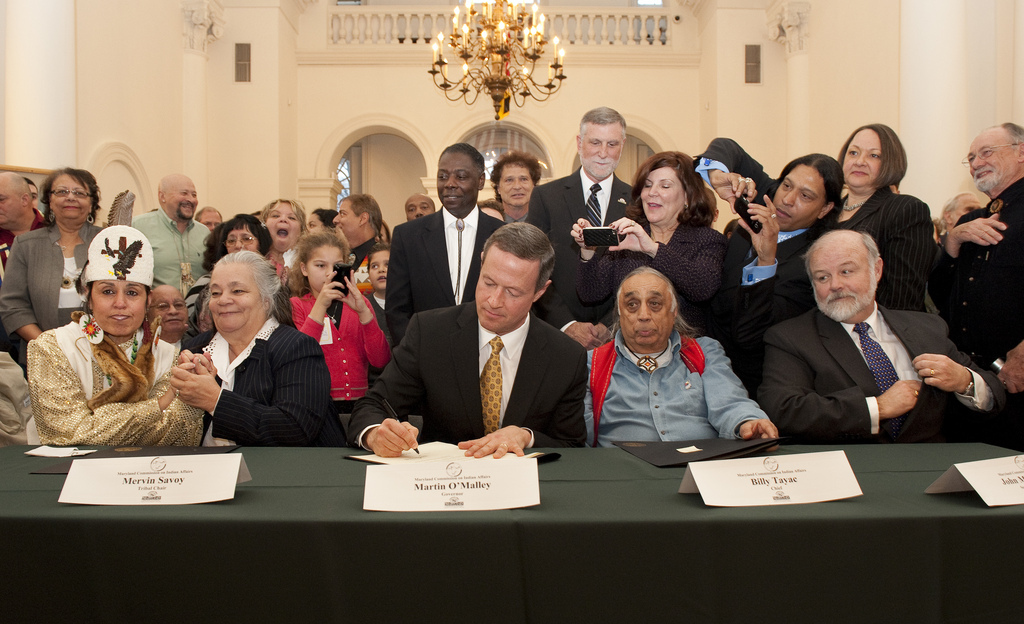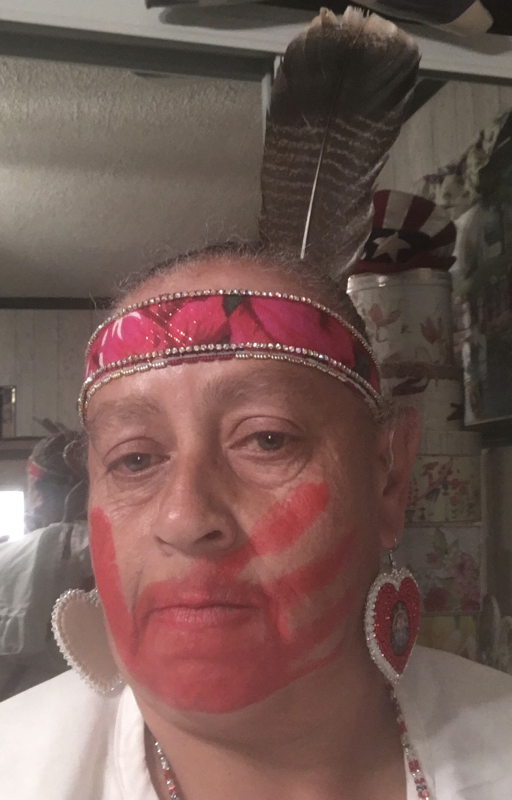
The Enduring Spirit of the Piscataway Conoy: A Story of Resilience and Reclamation
By [Your Name/Journalist Name]
PISCATAWAY PARK, MARYLAND – The sun dips low over the Potomac River, casting long shadows across the ancient lands that once bustled with life. Here, amidst the quiet serenity of Piscataway Park, a story thousands of years in the making continues to unfold – a narrative of profound resilience, cultural tenacity, and an unwavering connection to the ancestral homeland. This is the story of the Piscataway Conoy Tribe, a people who, despite centuries of displacement, disease, and attempts at erasure, proudly assert: "We are still here."

For over 13,000 years, the ancestors of the Piscataway Conoy thrived in what is now modern-day Southern Maryland and parts of Washington D.C. and Northern Virginia. They were the dominant Indigenous people of the Chesapeake Bay region, a sophisticated Algonquian-speaking society organized into a powerful confederacy. Their vast territory stretched from the Patuxent River in the east to the Anacostia and Potomac Rivers in the west, a landscape they meticulously managed and deeply revered.
"Our ancestors were the original stewards of this land," says Francis Gray, a tribal elder and respected figure within the Piscataway Conoy community. "They understood the intricate balance of the ecosystem, living in harmony with the rivers, forests, and bays that provided everything they needed. Our culture, our spirituality, our very identity is woven into the fabric of this place."
A Flourishing Civilization and First Contact
Before the arrival of Europeans, the Piscataway Confederacy was a well-established political and social entity. They lived in settled villages, cultivating vast fields of corn, beans, and squash, complementing their diet with abundant fish, shellfish, deer, and fowl from the Chesapeake’s rich bounty. Their longhouses were centers of community life, their intricate pottery and tools testament to their advanced craftsmanship. The Tayac, or paramount chief, wielded significant authority, maintaining peace and order among the various tributary tribes.
The first recorded European encounter occurred in 1608 when Captain John Smith navigated the Potomac River. His journals describe a powerful and numerous people, initially wary but eventually engaging in trade. Smith noted their well-fortified villages and the authority of their leaders. For a brief period, a fragile co-existence seemed possible.
However, this delicate balance shattered with the arrival of Lord Baltimore’s colonists in 1634. Unlike earlier encounters that focused on exploration or trade, the Maryland Charter granted vast tracts of land to the English, disregarding Indigenous sovereignty. The newcomers brought not only a foreign concept of land ownership but also devastating diseases like smallpox, to which the Indigenous population had no immunity. Within decades, the Piscataway population plummeted by as much as 90 percent.
The Long Retreat and "Going Underground"
Faced with overwhelming numbers, superior weaponry, and the relentless advance of colonial settlements, the Piscataway were forced into a series of retreats. They moved from their traditional lands along the lower Potomac, seeking refuge further inland and north. Treaties were signed, often under duress, and quickly broken by the burgeoning colony.

By the late 17th and early 18th centuries, many Piscataway had dispersed or adopted a strategy known as "going underground." To avoid persecution, enslavement, or forced removal, they intermarried with African Americans and Europeans, adopted non-Native surnames, and practiced their traditions in secret. This allowed them to physically remain on their ancestral lands, albeit often on the margins of colonial society, but at a significant cost to their overt cultural expression and public identity.
"It was a matter of survival," explains Rico Newman, a Piscataway Conoy tribal elder and historian. "Our ancestors made incredible sacrifices to ensure that the bloodlines continued, that the knowledge was passed down, even if it was whispered around a campfire instead of shouted in a public square. They never forgot who they were."
Despite the hardships, pockets of Piscataway descendants maintained their communities, particularly in Charles and Prince George’s counties, Maryland. They held onto fragments of their language, their traditional crafts, their knowledge of the land, and their deep-seated spiritual beliefs. The flame of their heritage flickered, but it never died.
The Fight for Recognition: A Modern Odyssey
The 20th century saw a resurgence of Indigenous identity across North America, and the Piscataway Conoy were no exception. Led by visionary leaders like Chief Turkey Tayac (1895-1978), who openly asserted his Piscataway heritage and worked tirelessly to reconnect scattered descendants, the tribe began the long and arduous journey toward official recognition.
Recognition, for Indigenous tribes, is not merely symbolic; it is a critical step towards self-determination, sovereignty, and access to resources and protections that were denied for centuries. It validates their continuous existence and inherent rights.
"For so long, we were told we didn’t exist, that we were gone," says Chief Billy Redwing Tayac, the current paramount chief of the Piscataway Conoy Tribe and son of Chief Turkey Tayac. "But our families knew the truth. Our history is written in the land, in our blood, in our traditions. Recognition is about correcting the historical record, about justice."
The path to state recognition in Maryland was complex, involving years of genealogical research, historical documentation, and political advocacy. The state of Maryland recognizes several Piscataway-descendant groups. In 2012, after decades of persistent effort, the Piscataway Conoy Tribe, alongside the Piscataway Indian Nation and the Cedarville Band of Piscataway Indians, finally received state recognition from the State of Maryland. This landmark achievement was a moment of immense pride and validation for the community.
While state recognition was a monumental victory, the fight for federal recognition continues. The federal process is notoriously stringent, requiring tribes to meet seven criteria, including continuous existence as an Indian community from historical times to the present, political influence over members, and a demonstrated descent from a historical tribe. This process can take decades, cost millions of dollars, and often places an immense burden on tribal resources. For many tribes, the federal government’s criteria are seen as an attempt to define Indigeneity through a narrow, colonial lens, rather than acknowledging the diverse ways Indigenous communities have survived and adapted.
Cultural Reclamation and Environmental Stewardship
With state recognition, the Piscataway Conoy Tribe has intensified its efforts to reclaim and revitalize its culture. Powwows, once held in secret, are now vibrant public celebrations, drawing thousands to witness traditional dances, drumming, and storytelling. These events are crucial for passing on traditions to younger generations and for educating the broader public about Indigenous history and contemporary issues.
Language revitalization is another key focus. While the Algonquian language of their ancestors is no longer spoken fluently, tribal members are working to learn words and phrases, incorporating them into ceremonies and educational programs. Traditional arts, such as pottery, beadwork, and regalia-making, are being taught and preserved.
"It’s about reconnecting with our roots, about remembering who we are and where we come from," says a young tribal member participating in a traditional dance workshop. "Every step, every song, every bead placed, is an act of defiance against erasure, an act of healing."
Beyond cultural preservation, the Piscataway Conoy Tribe remains deeply committed to environmental stewardship. Their ancestral lands are still threatened by pollution, urban sprawl, and climate change. The tribe advocates for the protection of the Chesapeake Bay and its tributaries, drawing upon thousands of years of traditional ecological knowledge. They view themselves as guardians of the land and water, a responsibility inherited from their ancestors.
Looking to the Future: Sovereignty and Self-Determination
The Piscataway Conoy Tribe faces the common challenges of many contemporary Indigenous communities: economic development, access to healthcare, education, and the ongoing struggle for full sovereignty. Federal recognition would open doors to critical resources and strengthen their ability to govern themselves and protect their cultural heritage.
"Our future is about self-determination," Chief Tayac emphasizes. "It’s about having the right to make decisions for ourselves, for our children, for our land. It’s about ensuring that the next seven generations have a strong foundation, built on the legacy of those who came before."
The story of the Piscataway Conoy Tribe is a powerful testament to the resilience of the human spirit. From being a dominant force in the Chesapeake, to facing near annihilation, to "going underground" to survive, and now, to a vibrant re-emergence, their journey is a microcosm of the broader Indigenous experience in America. They are not a people of the past, confined to history books, but a living, breathing community, deeply rooted in their ancestral lands, steadfastly working to ensure their traditions and their identity endure for millennia to come. As the sun sets over the Potomac, the spirit of the Piscataway Conoy continues to shine brightly, a beacon of hope and perseverance.


